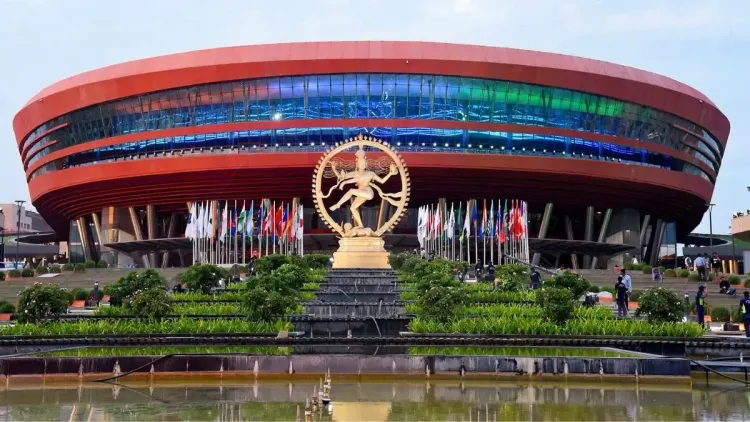How Will the Bharat International Rice Conference Unlock Rs 1.80 Lakh Crore in New Markets?

Synopsis
Key Takeaways
- BIRC 2025 aims to unlock Rs 1.80 lakh crore in new rice markets.
- Participation from international ministers and thousands of stakeholders.
- Focus on sustainability and innovations in rice cultivation.
- Showcasing Indian rice in global cuisines through Culinary Experience Zone.
- Highlighting India’s significant role in global food security.
New Delhi, Oct 24 (NationPress) The Bharat International Rice Conference (BIRC) 2025, scheduled to take place in the national capital from October 30 to 31, is focused on unlocking a staggering Rs 1.80 lakh crore in new global rice markets, as stated by the Commerce Ministry on Friday.
During the curtain-raiser for BIRC 2025 on the same day, Abhishek Dev, chairman of the Agricultural and Processed Food Products Export Development Authority (APEDA), announced that the foreign ministers from the Philippines, Ghana, Namibia, and Gambia will attend this two-day event at Bharat Mandapam.
As one of the largest producers and exporters of rice globally, supplying to more than 172 countries, India aims to leverage BIRC 2025 as a platform to establish a foothold in international food supply chains.
This initiative seeks to prove that Indian rice varieties are authentic, high-performance alternatives for various cuisines, potentially unlocking Rs 1.80 lakh crore in new market opportunities and facilitating Rs 25,000 crore in export MoUs during the event, as per an official announcement.
The event is expected to attract over 3,000 farmers and Farmer Producer Organisations (FPOs), more than 1,000 foreign buyers from 80 countries, and 2,500 exporters, millers, and related industries.
A special Culinary Experience Zone, crafted by IREF and APEDA in collaboration with IRRI and ITC Hotels, will highlight Indian rice in global cuisines through chef demonstrations and tasting sessions. Sensory panels and buyer clinics will evaluate quality and preferences, while instant export onboarding facilities will facilitate immediate trade MoUs.
BIRC 2025 will feature a diverse range of thematic activities and discussions. A coffee table book showcasing India’s rich rice heritage—including both Basmati and non-Basmati varieties, historical GI stories, farmer narratives, and innovations—will be launched at the event.
Designed as a global platform aligned with the vision of Viksit Bharat @2047, the conference will unite producers, exporters, importers, policymakers, financiers, logisticians, research institutions, and allied service providers to enhance transparency, efficiency, and resilience within the global rice trade. Key themes will revolve around sustainability, innovation, and transparent, rules-based commerce.
Organized by the Indian Rice Exporters’ Federation (IREF), which represents over 7,500 exporters and stakeholders across India, in partnership with APEDA, the conference has garnered support from various line ministries, departments, and state governments.
India produced approximately 150 million tonnes of rice in 2024-25, which constitutes about 28 percent of the global output. In FY 2024-25, India exported 20.1 million metric tonnes of rice valued at around $12.95 billion, reaching more than 172 countries.
Emphasizing the significance of rice in global food systems, BIRC 2025 highlights that rice is essential for food security worldwide, with production having increased threefold since 1961—from 216 million tonnes to nearly 776 million tonnes. Over four billion people rely on rice for sustenance and income, with around 150 million smallholder farmers cultivating the crop across more than 100 countries. The global rice industry is valued at approximately $330 billion, making it the third most-traded food commodity.
Given that rice cultivation is resource-intensive—utilizing around 24-30 percent of global irrigation water and covering about 167 million hectares—the conference will tackle innovations in agronomy, irrigation, certification, and traceability to promote sustainability and lessen the sector’s environmental impact.









